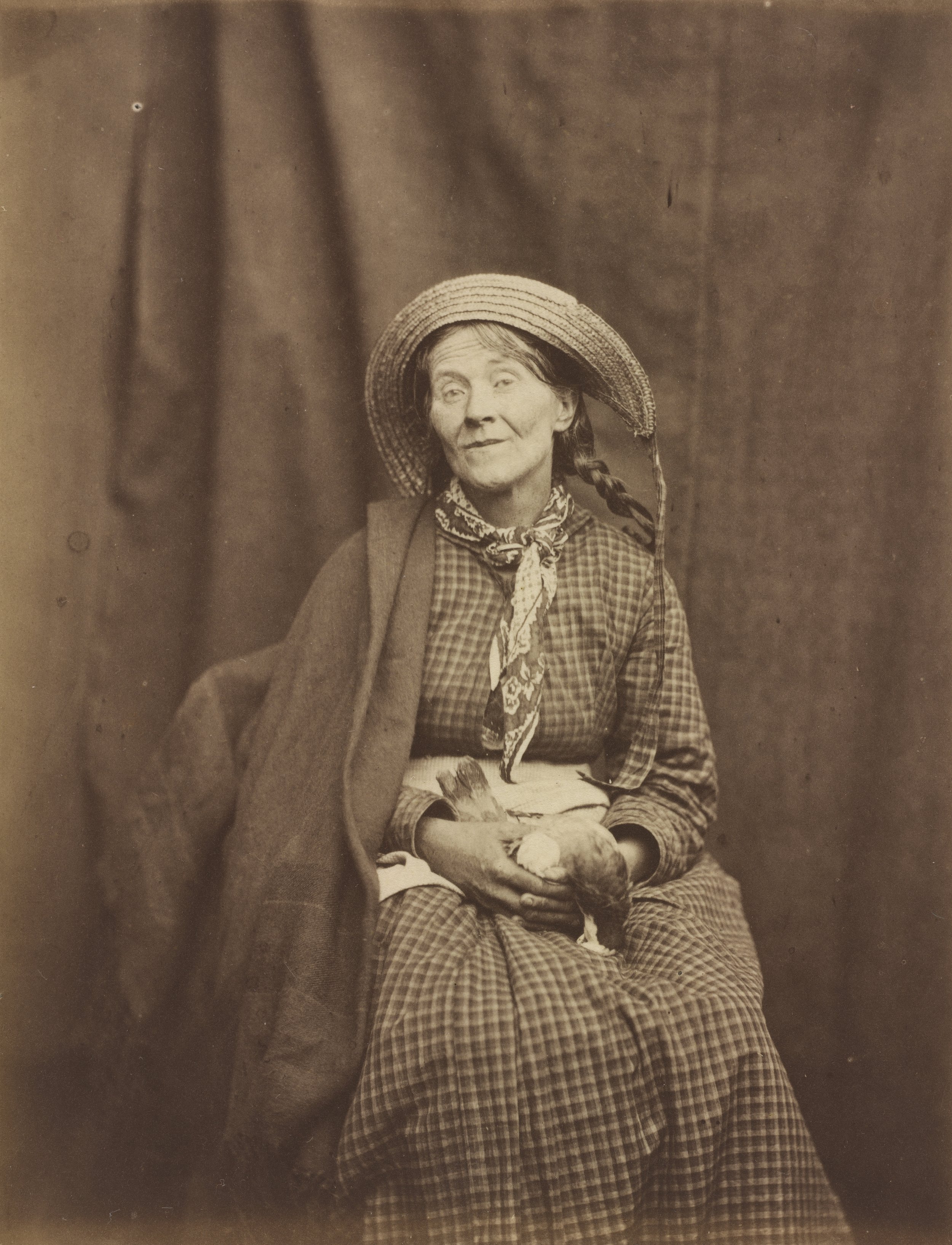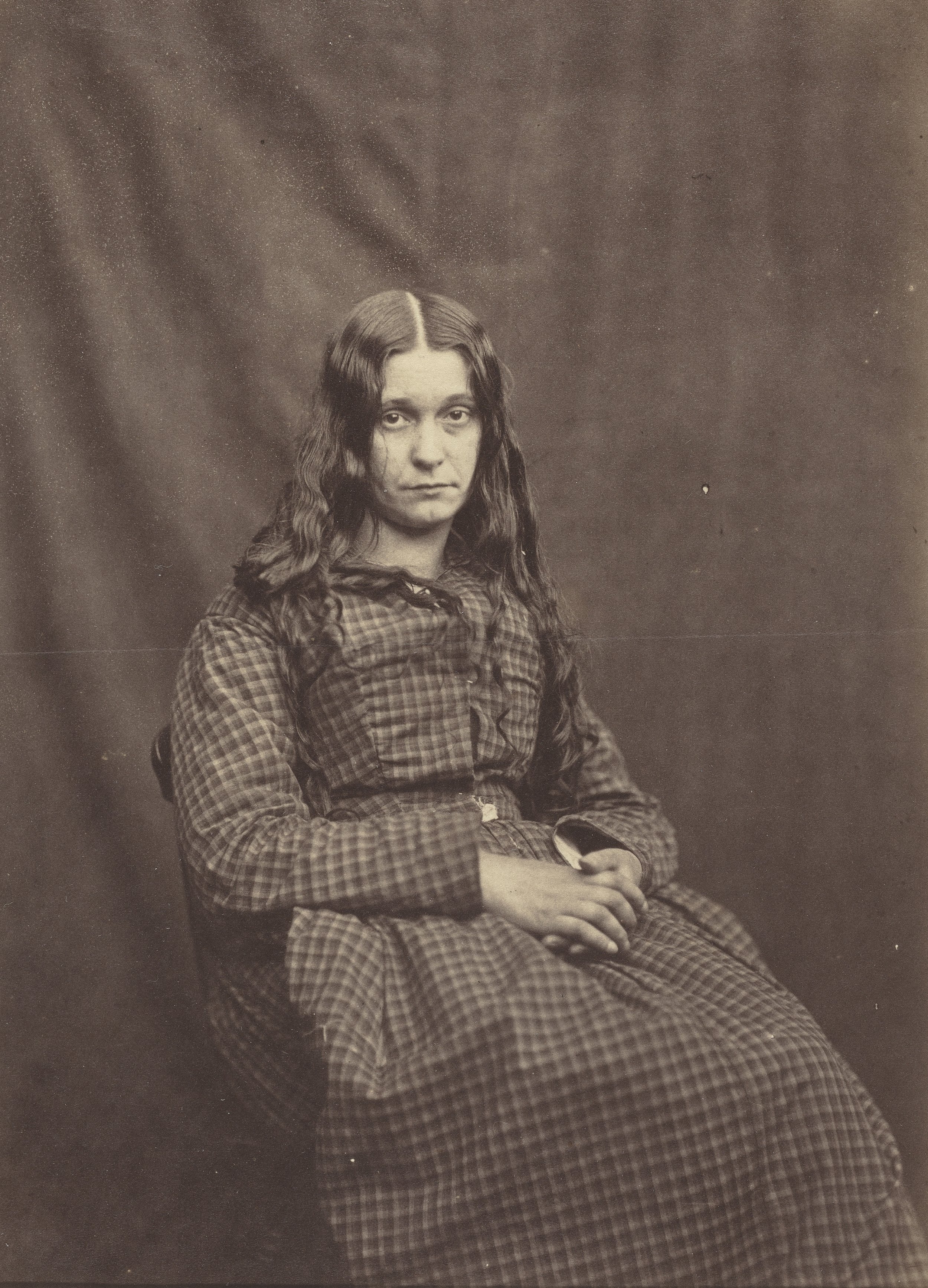The Connection Between the Visible and the Invisible
Can a photograph of a person open a window to their mind? Ask Dr Hugh Welch Diamond, and the answer would be yes.
Dr Hugh Welch Diamond was a Victorian psychiatrist and a passionate amateur photographer, who believed that photography could offer new ways to examine the mind of the mentally ill. Looking at the series of photographs he took of his patients at the Surrey County Asylum in 1855, one can understand why: these images are still arresting today, and their effect must have been a great deal more intense at the time when photography was a fairly new invention.
Diamond made his first pictures only 3 months after the commercial introduction of photography in 1839. He saw the photographer as someone who is able to ‘catch in a moment the permanent cloud, or the passing storm or sunshine of the soul’ and thus ‘trace out the connection between the visible and the invisible.’ Diamond believed fervently that photographs could be used both in diagnosing the mentally ill and as a part of their therapy. To Diamond, photographs communicated in ‘the silent but telling language of nature’, as opposed to human language that could only use ‘vague terms which denote a difference in the degree of mental suffering.’ A picture, unlike words, would speak for itself with the most marked precision.
In the early 1850s, Diamond became the director of the Surrey County Asylum — a psychiatric hospital for women — and decided to put his theories of photo-therapy into action. The series of haunting portraits from 1855 has remained probably the most famous example of his legacy. Today, many of the pictures are on display in hospitals around Britain, and one has even made it to Musée d’Orsay in Paris. Originally, the images featured in the Medical Times and the Gazette as illustrations for a series papers on ‘The Physiognomy of Insanity’ by John Conolly.
Diamond’s photo-psychiatry was based on physiognomy — the ancient theory that a person’s nature can be judged by their appearance, especially facial features and expressions.
Diamond’s photo-psychiatry was based on physiognomy — the ancient theory that a person’s nature can be judged by their appearance, especially facial features and expressions. Some even believed that if a person had some physical features of a particular animal, he or she would also have the characteristics of that animal. (If you look like a bull, you must be stubborn, strong and hard-working, naturally!) Physiognomy thus also contributed to racist practices such as slavery, and later on in the 20th century, when physiognomy was already considered as a pseudo-science par excellence by most, it was still embraced by ideologies such as Nazism.
However, among the Victorians – scientists, academics and artists alike – physiognomy was hugely popular. The trend is evident in 19th century literature in the exhaustively detailed descriptions of the characters’ appearance (think Balzac, Dickens, Hardy and the Brontë sisters.) Oscar Wilde was one of the first to openly criticise the common assumption that appearance and personality are somehow interminably linked. In his Picture of Dorian Gray(published in 1891, five years after Diamond’s death), Wilde gives physiognomic ideas a good seeing to. The protagonist Dorian remains beautiful and young throughout his moral corruption, while the magical portrait painted by his friend begins to reflect the hideous change that has taken place in his soul. In the end, Dorian has to face the horrifyingly picture: the ugly reality behind his beautiful appearance. Perhaps it was a self-revelatory shock effect not unlike this that Diamond was seeking to bring about with his patient portraits, too.
Diamond believed that he could aid his patients’ recovery process by showing them a realistic view of themselves.
While the exact principles and methods of Diamond’s photo-therapy seem somewhat dubious and its practical results remain unclear, he did seem to have genuinely good intentions. While Diamond sought to create a systematic taxonomy based on physical appearance, to him physiognomy was ‘moveable’: it was not the patient herself who was categorized and stereotyped but the psychopathological effects of the illness affecting her.
Diamond believed that he could aid his patients’ recovery process by showing them a realistic view of themselves. In an article from 1856, Diamond tells a story of a woman who imagined herself to be the Queen. It took a lot of persuasion to get ‘a sitting’ from her, and Diamond’s humble wish to ‘take pictures of all the queens under his care’ was first met with much contempt: her steadfast opinion was that while the others might have imagined their titles, she had been born a queen. Gradually, Diamond explains, ‘her amusement in seeing the portraits and her frequent conversation about them was the first decided step in her gradual improvement’, and eventually she was discharged ’perfectly cured’ and laughing heartily at her former imaginations.
Later on, Diamond established a private mental health clinic in Twickenham (in a building now known as Twickenham House) and went on to treat ‘women of influence.’ He had to give up photographing his patients, as they now came from well-to-do families who demanded the strictest privacy.
But did Diamond have a point? From a psychological viewpoint it seems he was onto something, even if his methods were clinically questionable. Still today, seeing yourself ’captured’ seems to hold some kind of endless intrigue — one only needs to think of today’s obsession with selfies to see that the tendency is alive and well. All of us are also familiar with the feeling that sometimes the camera just does not capture us the way we see ourselves, and the person in the photo looks strange to us. What examining a photograph of a person — and of ourselves in particular — can reveal to us, first and foremost, is how integrally our imagination and emotions are part of our perception, the way we view even the most ‘realistic’ and ’objective’ piece of documentation.
Another feather in Diamond’s cap comes from wanting to raise awareness of mental health problems through photo-psychiatry – and the fact they could be cured. He believed that exposure to these kinds of pictures was essential for anyone who truly wanted to understand mental illnesses: ‘Those who never witness this exhibition of human suffering, either in the original or in the copy drawn to the life,’ Diamond wrote, ‘can hardly imagine this peculiar state of mental prostration.’ Considering such attitude — along with his remarkable lens work — we can perhaps conclude that Diamond was an artist first and a man of science only second.
Photography curtesy of the Science and Society picture library



